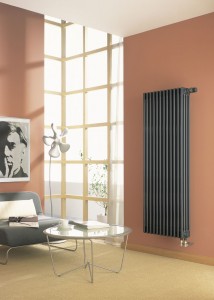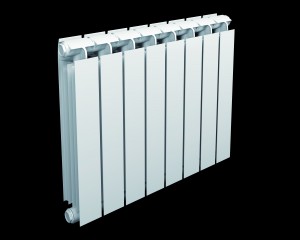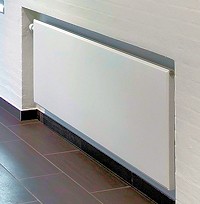Kirsty Allsop’s upcycling program ‘Fill Your House For Free’ has finally found a use for old, corrugated flat panel radiators. It may not be everybody’s cup of tea, but a coffee table made out of an old flat panel radiator, appeared to be a hit. And anything other than scrapping, must be good…
Max McMurdo is the shows upcycling Designer, he’s made chairs out of old baths and shopping trolleys, so a flat panel radiator coffee table doesn’t exactly stand out. I was struck how simple a lot of the ideas were and could imagine the cynical saying ‘I could do that’, but as we all have seen before – they don’t, do they?
The radiator was leaning against the skip, as he was entering the property that was being ‘upcycled’. But Max didn’t see an old radiator waiting to be scrapped, he saw a substantial piece of kit that could be used and used in an interesting way.
It was painted by hand using paint sourced on Freecycle, given a glass top, which I presume was only cost and the legs were made from recycled copper plumbing pipes. And the person it was for was more than happy. While I did like it and thought the show contained a lot of very good ideas, I was a little concerned about the longevity of the piece and what would happen to people’s shins.
However you can’t fault Kirsty’s creativity and energy, and when you are replacing those old corrugated flat panel radiators don’t throw them in the skip; recycle, upcycle or just think what is possible with old radiators.



